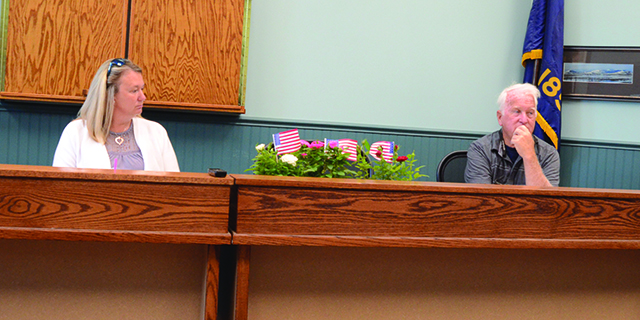A Thumb in the Dike: Wandschneider
Published 5:16 pm Wednesday, July 17, 2019
Our leaky southern border will not be fixed with a stronger or higher or more technologically sophisticated wall. The fact is that the whole big world is undergoing a period of mass migrations—people are leaving farms and cities across the globe for other places in their own countries or for other countries. And that includes our good old US of A, where seawater is gulping up parts of the southeast and people are being forced to move to higher ground, where fire and flood sent residents scurrying from Paradise in Northern California last year and high temperatures and fires are disturbing chunks of Southern California this year.
In the public conversations about our southern border crisis, there is far too little talk about the reasons for mass migration. When people are hungry and thirsty, too hot or too cold without protection, or plagued by violence and corruption, they move. Even when the odds of successful migration are low, they move. In Syria, where the pre-war population was 22 million, six and a half million have left the country, almost four million are in Turkey alone! An additional six million are “internally displaced,” i.e. not in their original towns, cities, and farms. Over a million have tried to return—and their situation is not good.
Trending
War displaces people—our last major world migration crisis was during and after World War II. And violence short of war is a major factor in world migration today. Over two million have left South Sudan, which is in often violent political upheaval, and over a million have left Myanmar, where religious violence is a major cause.
In India, where farming and drinking have always depended on monsoon rains, erratic weather has left entire cities dry for months. In the New York Times today, we learn that “Chennai [a city of 8 million] went without rain for 200 days. As winter passed into spring and the temperature rose to 108° F, its four water reservoirs turned into puddles of cracked mud… On June 20, the delayed summer monsoon arrived as a disappointing light shower.” People are dependent on water trucks from outside—or they move! And, according to the Times report, “These water crises are now global and perennial [in] cities from Cape Town to Mexico City to São Paulo, Brazil. Nearly half of the human population is living with water scarcity, inhabiting places unable to fully meet their drinking, cooking and sanitation needs.”
My relatives in Southern California are banking on desalinization plants; my son in Phoenix wonders when hotter will be too much. In other words, in our own country the changes in water, fire, and weather are moving people. And when they flee places like California, Arizona, and Texas, they’ll be looking for water and green grass. If Oregon fires don’t scare them off, housing prices here will continue to fly high too.
Yet, the President and many in our country see the influx from Mexico and Central America as our major migration problem. There too, drought is playing a role, and a disease in coffee is causing economic havoc. But the gang activity in Central America and the drug cartels in Mexico get the most mention at our southern border.
And there too, the first thing is to look at the root causes—drugs, violence, climate, agriculture, water, etc. and then to look for ways to address them. The President of Mexico, Mr. López Obrador, is calling for “a new Marshall Plan,” in Central America, with a $30 billion initiative to invest in the region and support migrants in Mexico. Mexico has already committed $30 million to a reforestation project in El Salvador, which will plant over 100,000 acres of trees and create 20,000 jobs. (Meanwhile, the US has cut our aid to these places.)
And we might look to curbing some of OUR exports to Mexico and Central America. American guns—exported legally and smuggled—are involved in half the homicides in Mexico, which leads the world in that ignoble category. And I remember reading years ago that chemicals used in creating the cocaine that American drug users want is exported wholesale and without restriction to manufacturers in Mexico and Central America. Finally, while curbing our own exports of these dangerous products, we might look at curbing our appetites for the drugs that cross the border this way and fuel the violence and displacement their manufacture breeds.
Trending
Building a wall is like throwing a handful of sandbags in front of a flooding river, or putting a finger in a dike. There are better ways to spend our money—and to help manage a crisis that extends from the Turkey-Syrian border to borders between Mexico and the US and California and Oregon.









